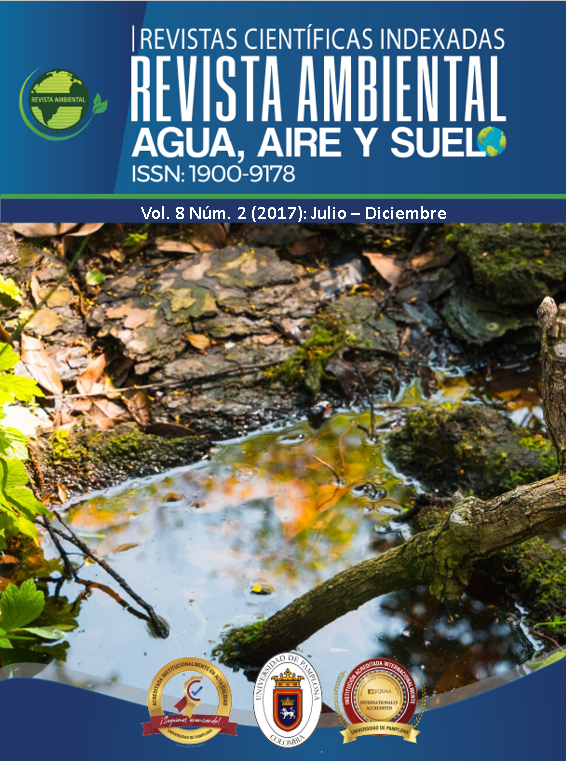The Environmental Commitment of Top Management in the Adoption of ISO 14001 Environmental Management Systems
DOI:
https://doi.org/10.24054/aaas.v8i2.2066Keywords:
contribuir, desempeño, impactos, organizaciónAbstract
Organizations in the productive sector impact the environment due to the daily activities generated in production processes. To address these impacts, Environmental Management Systems (EMS) are adopted, but in order to be effective, the EMS must have the unrestricted support of top management or the head of the company, with the purpose of strengthening the model and successfully implementing it.
The objective of this paper is to reflect on how top management’s commitment is key to achieving organizational environmental performance and policy, generally ensuring that EMS adopted by companies do not become inoperable tools that fail to contribute to sustainable development and genuine environmental commitment. The document is based on a literature review, which has allowed us to analyze and argue, from the perspective of organizational structure, how top management plays a crucial role in the development of the company’s environmental area.
Among the main conclusions, it is highlighted that those responsible for designing environmental policies should not use EMS as a replacement for environmental regulations and standards; rather, it should be used as a tool that contributes to sustainable development based on its three fundamental pillars: community, environment, and economy.
Downloads
References
Arteche, F. (2002). La empresa y el desarrollo sostenible. Ingeniería Química, (494), 494-498.
Boiral, O. (2011, junio). Managing with ISO Systems: Lessons from Practice. Long Range Planning, 44(3), 197-220.
Calicchio Berardi, P., & Peregrino de Brito, R. (2015, marzo). Drivers of Environmental Management in the Brazilian Context. Brazilian Administration Review, 12(1), 109-128.
Castillo Grancha, E. (2012). Sistemas de gestión medioambiental. Auditor ISO 14001. Ad Qualité.
Chiappetta Jabbour, C. J. (2013). Treinamento ambiental em organizações com certificação ISO 14001: estudo de múltiplos casos e identificação de coevolução com a gestão ambiental. Produção, 23(1), 80-94.
Coglianese, C., & Nash, J. (2011). Bolstering private-sector environmental management. Issues in Science and Technology, 17(3).
Escobar Cárdenas, S. C. (2009). Realidad de los sistemas de gestión ambiental. Sotavento, 13, 68-79.
Fonseca, L. M., & Dominguez, P. J. (2018). Exploratory research of ISO 14001:2015 transition. Sustainability, 10(1), 1-16.
Fontalvo Herrera, T. J., & Bolívar Córdoba, M. A. (2010). El sistema de gestión de la responsabilidad social empresarial como una estrategia para la prevención de la contaminación y de los riesgos profesionales. Escenarios, 8(2), 13-20.
García del Junco, J., & Castellanos Verdugo, M. (1993, junio). Responsabilidad social de la dirección estratégica en la política del medio ambiente. Boletín de Estudios Económicos, 48(149), 327-341.
Gawaikar, V., Bhole, A. G., & Lakhe, R. R. (2017). Measuring the impact of ISO 14001. Polish Journal of Environmental Studies, 27(2), 637-643.
International Finance Corporation (IFC). (2015). Sistema de gestión ambiental y social: Manual de implementación. Washington, D.C.: IFC.
Lannelongue Nieto, G. (2011). Esfuerzo y eficacia en los sistemas de gestión ambiental de empresas certificadas ISO 14001. Universidad de Salamanca.
Medina Varela, P., Cruz Trejos, E. A., & Buriticá Noreña, C. A. (2016). Caracterización y propuestas de producción limpia en los principales procesos productivos regionales. Universidad Tecnológica de Pereira.
Montserrat, M., & Díaz, L. (2002). Marketing ecológico y sistemas de gestión ambiental: Conceptos y estrategias empresariales. Revista Galega de Economía, 11(2), 1-25.
Oliveira Baumbach, M. (2013). Environmental management in small mining enterprises: Comparative analysis of three Brazilian cases through the lenses of ISO 14001. Revista Escola de Minas, 66(1), 89-95.
Pautt Torres, G. (2011, junio). Liderazgo y dirección: dos conceptos distintos con resultados diferentes. Revista de la Facultad de Ciencias Económicas de la Universidad Militar Nueva Granada, 19(1), 213-228.
Pedraza, P., Gómez, M., Alarcón, F., Herrera, A., & Ramos, F. (2011). Desafíos de la gerencia: Responsabilidad social y desarrollo sostenible. Revista Estudiantes Facultad de Ciencias Económicas, 1(1), 23-34.
Pereira, A. C., & De Melo, S. B. (2004). Managers’ perceptions about the contributions of the ISO 14001. Journal of Cleaner Production, 12(6), 633-637.
Pérez Uribe, R., & Bejarano, A. (2008, abril). Sistema de gestión ambiental: Serie ISO 14000. Revista Escuela de Administración de Negocios, 64, 89-106.
Quiñónez Rizo, E. A. (2014, enero 30). Gerencia ambiental en Colombia. Ambiente y Desarrollo, 18(1), 43-55.
Serrano Bedia, A. M., López Fernández, C., & García Ruiz, M. E. (2004). La implementación de sistemas de gestión ambiental de acuerdo a la norma ISO 14001: Un estudio exploratorio. Revista de Economía y Empresa, 21(50).
Tejada Losada, F. (2013, agosto 12). La estrategia y los sistemas integrados de gestión en las organizaciones. Signos, 5(2), 89-99.
Vera Solano, J. A., & Cañón Barriga, J. E. (2018, abril 20). The added value of an environmental management system beyond certification. Bistua, 16(1), 86-91.
Downloads
Published
Issue
Section
License
Copyright (c) 2022 REVISTA AMBIENTAL AGUA, AIRE Y SUELO

This work is licensed under a Creative Commons Attribution-NonCommercial 4.0 International License.










